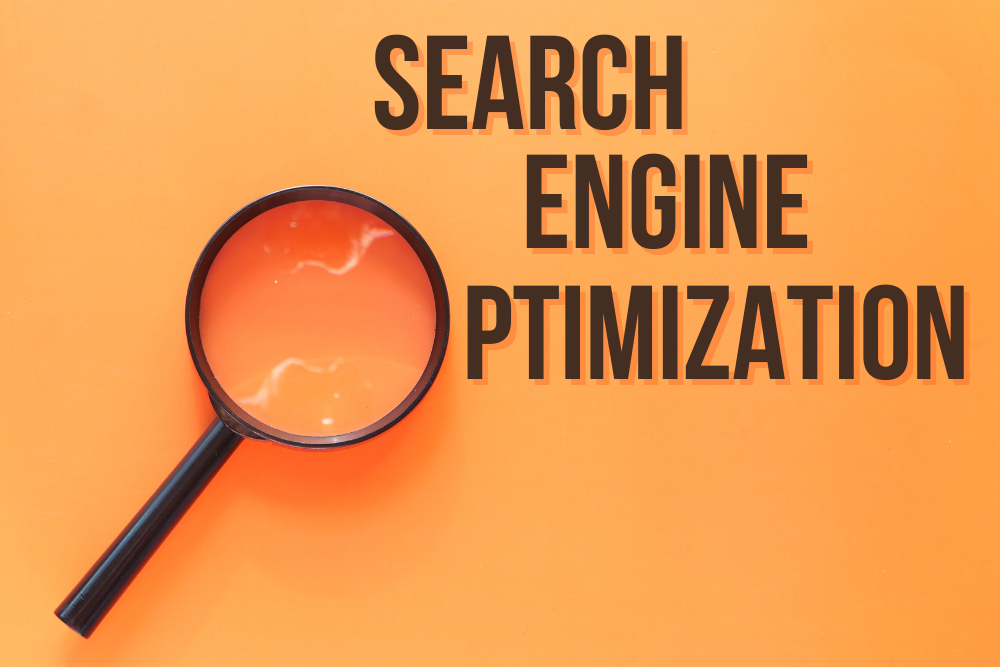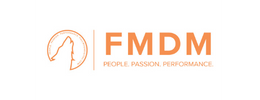Working with a marketing firm can be the secret ingredient that adds that bit of eye-catching sparkle to your brand. However, when the acronyms come flying, understanding the nitty gritty details about your campaign can be a bit dizzying. That’s why we’ve put together for you a basic cheat-sheet of industry jargon for reference when working on your projects (See our CEO’s Internet Marketing Blueprint for in-depth strategies to meet and exceed your goals!).
In this article:
- Search Engine Optimization Terms
- Pay-Per-Click Terms
- Marketing and Sales Terms
- Tech Systems and Terms
- Additional Resources
- There’s an Easier Way!
Search Engine Optimization Terms
- AI: Artificial Intelligence.
- Machine learning that enhances digital goods/solutions for users.
- Examples: Common AI in eCommerce can make purchasing recommendations, personalized shopping experiences, virtual assistants, chatbots, and voice search.
- Machine learning that enhances digital goods/solutions for users.
- KPI: Key Performance Indicators. (Also referred to as a PPC term.)
- Measurable metrics to gauge performance over channel-specific marketing activities. Or, the numbers and data that proves the ROI success of marketing campaigns and strategies so your business can focus on what’s working and tweak what isn’t.
- ROI: Return On Investment. (Also referred to as a PPC term.)
- A calculation of the monetary value of an investment versus its cost. The ROI formula is: (profit minus cost) / cost.
- Example: Spending $1,000 on advertisement and getting back $10,000 would yield an ROI of 0.9, or 90%. Formula: (profit – cost) / cost.
- A calculation of the monetary value of an investment versus its cost. The ROI formula is: (profit minus cost) / cost.
- SEM: Search Engine Marketing.
- An ad-heavy digital marketing strategy with the purpose of increasing website visibility to obtain traffic to your website in search engine results pages (SERPs) and is often used hand-in-hand with SEO.
- Example: The featured ad results that appear on the top of Google search pages.
- An ad-heavy digital marketing strategy with the purpose of increasing website visibility to obtain traffic to your website in search engine results pages (SERPs) and is often used hand-in-hand with SEO.
- SEO: Search Engine Optimization.
- SERP: Search Engine Result Page.
- A search engine’s response to a user’s search query, often including but not limited to: organic search results, paid Google Ads results, featured snippets, knowledge graphs, and various media results.
- Example: You type a query into Google, click search, and the SERP is that list of links and such that appear.
- A search engine’s response to a user’s search query, often including but not limited to: organic search results, paid Google Ads results, featured snippets, knowledge graphs, and various media results.
BACK TO TOP
Pay-Per-Click Terms
- CPA: Cost Per Acquisition.
- The fee an advertiser pays every time a fresh lead takes a predefined action instigated by a promotional campaign.
- Example: A new customer buys an item or signs up for your company’s newsletter.
- The fee an advertiser pays every time a fresh lead takes a predefined action instigated by a promotional campaign.
- CPC/PPC: Cost Per Click/Pay-Per-Click.
- Advertizer only pays when a user clicks on an ad.
- Cousin Acronym: CPM: Cost Per Mille (thousand) impressions.
- CTR: Click-Through Rate.
- The number of clicks that your ad receives, divided by the number of times your ad is shown.
- Example: A link with 100 impressions (seen 100 times) clicked 5 times would have a CTR of 5%.
- The number of clicks that your ad receives, divided by the number of times your ad is shown.
- ROAS: Return on Ad Spend.
- An important KPI; the amount of revenue that is earned for every dollar spent on a campaign found by dividing the revenue attributed to your ad campaign by its cost to run.
- Example: You spend $1,000 on ads and your attributed revenue is $2,000. Dividing $2,000 by $1,000 gives you a ROAS of 2:1, or 200%.
- An important KPI; the amount of revenue that is earned for every dollar spent on a campaign found by dividing the revenue attributed to your ad campaign by its cost to run.
BACK TO TOP
Marketing and Sales Terms
- B2B: Business-to-Business.
- Marketing of products or services to other businesses and organizations
- Example: A wholesaler selling soap to a department store.
- Marketing of products or services to other businesses and organizations
- B2C: Business-to-Consumer.
- Marketing of products or services to personal consumers.
- Example: Your aunt Ruth purchasing a TV streaming subscription.
- Marketing of products or services to personal consumers.
- BR: Bounce Rate.
- A metric based on the percentage of people who visit only your website’s landing page (or homepage) without visiting any other page.
- Example: When you click into a website that is poorly managed and all interest fades from further exploration, and you close the browser and go about your search elsewhere.
- A metric based on the percentage of people who visit only your website’s landing page (or homepage) without visiting any other page.
- CMS: Content Management System.
- CR: Conversion Rate.
- The percentage of customers that complete certain actions that have a positive, profitable impact on your business.
- Example: 100 people click on an ad, and one of those individuals making a purchase will give you a CR of 1%.
- The percentage of customers that complete certain actions that have a positive, profitable impact on your business.
- CRM: Customer Relationship Management.
- A technology for managing all your company’s relationships and interactions with established and potential customers.
- Example: HubSpot, Freshworks
- A technology for managing all your company’s relationships and interactions with established and potential customers.
- CRO: Conversion Rate Optimization.
- A process of increasing the percentage of your website visitors taking a desired action through customer generation techniques.
- Example: Choosing to have text-based call-to-actions within your current content to increase awareness/interaction and avoid banner blindness (a phenomena where users don’t register seeing banner ads).
- A process of increasing the percentage of your website visitors taking a desired action through customer generation techniques.
- CTA: Call to Action.
- Website prompt (clickable button or hyperlinked text) asking users to perform an action like signing up for a newsletter, downloading a demo, or buying a product.
- Example: Click here and see what it feels like to Do Nothing for 2 Minutes! ?
- Website prompt (clickable button or hyperlinked text) asking users to perform an action like signing up for a newsletter, downloading a demo, or buying a product.
- MOM & YOY: Month Over Month, Year Over Year.
- Comparing measured rates of change and growth over two identical periods of time.
- Example: Comparing sales from 2021 in the fiscal year to sales from 2022’s reports. Check out this nifty Growth Calculator to see how your business has altered!
- Comparing measured rates of change and growth over two identical periods of time.
BACK TO TOP
Tech Systems and Terms
- GA: Google Analytics.
- A dashboard that helps you to determine four sectors of who comes to your site (audience), how they got there (acquisition), what they do once they are in (behavior), and tracks the desired actions you want them to take while on your site (conversion) through data metrics and dimensions overview.
- Example: This site entails extended info on what you need to know about GA.
- A dashboard that helps you to determine four sectors of who comes to your site (audience), how they got there (acquisition), what they do once they are in (behavior), and tracks the desired actions you want them to take while on your site (conversion) through data metrics and dimensions overview.
- MAP: Marketing Automation Platform.
- Technology or software that automates marketing activities across various channels (social media, website, email, etc.).
- Example: Your software that performs multiple tasks at scale, such as sending an email to all individuals in a database (like your newsletter subscribers), and provides detailed metrics on the performance of those tasks.
- Technology or software that automates marketing activities across various channels (social media, website, email, etc.).
- TLS: Transport Layer Security.
- A widely adopted security protocol designed to facilitate privacy and data security for communications over the Internet through certification.
- Example: A digital equivalent to a traditional courier, confirming the person’s ID to verify that the recipient was genuine before delivering the package.
- A widely adopted security protocol designed to facilitate privacy and data security for communications over the Internet through certification.
- UI: User Interface.
- All visual components a user might interact with on a technological device or program, including the device itself as well as apps and websites.
- Example: The elements that relate to a user’s direct visual experience, such as the layout of buttons, scroll bars, icons, logos, and text presentation.
- All visual components a user might interact with on a technological device or program, including the device itself as well as apps and websites.
- UX: User Experience.
- The comprehensive experience that a user has while consuming or using a product.
- Example: The feeling you are having here, now, enjoying this thoroughly informative blog and how your attitude will shift through this and future interactions. (*wink*)
- The comprehensive experience that a user has while consuming or using a product.
BACK TO TOP
Additional Resources
For a complete list, check out HubSpot’s Ultimate Dictionary of Marketing Terms. For jargon split by purpose which can come in handy when scrolling through a whole dictionary is not in your schedule, Wrike’s infographic, Glossary of Online Marketing Terms, can be your little secret to speaking confidently during consultations.

No Time to Spend on Jargon? Bank on Our Digital Marketing Experts Instead!
This short list is a nice jumping off point of all the tech-speak that is floating around the digital marketing world, but it’s more like a pamphlet than a dictionary. Considering the benefits of delegating the responsibility of learning this in-depth pseudo-language? You’ve come to the right den! At Fullmoon, we don’t just speak the lingo, we let our results speak for us. And, if you’re more interested in sustainable, long-term positive results for your company vs. making a quick buck in an opportune moment, we just may be the pack you have been looking for.
BACK TO TOP










